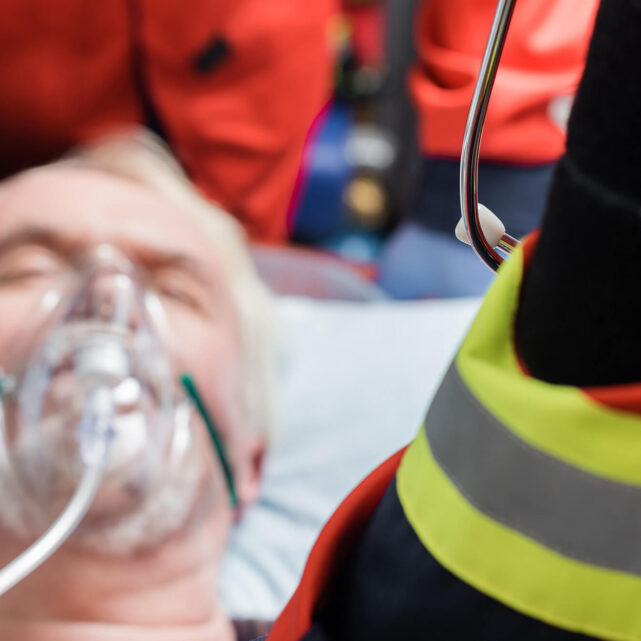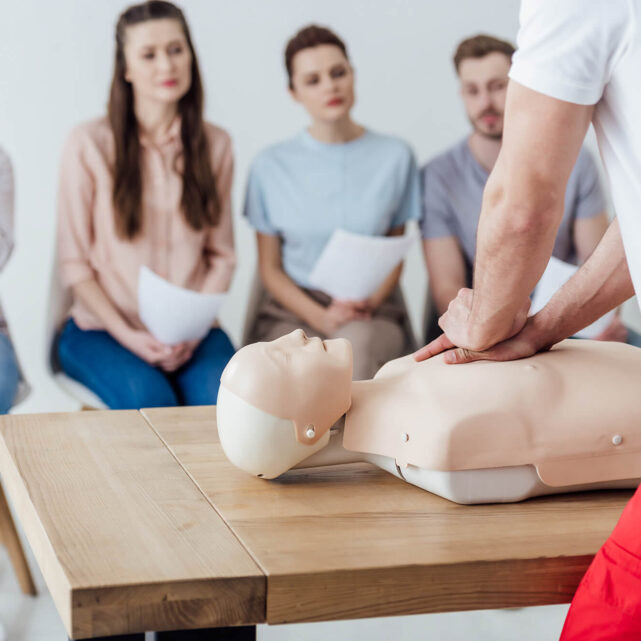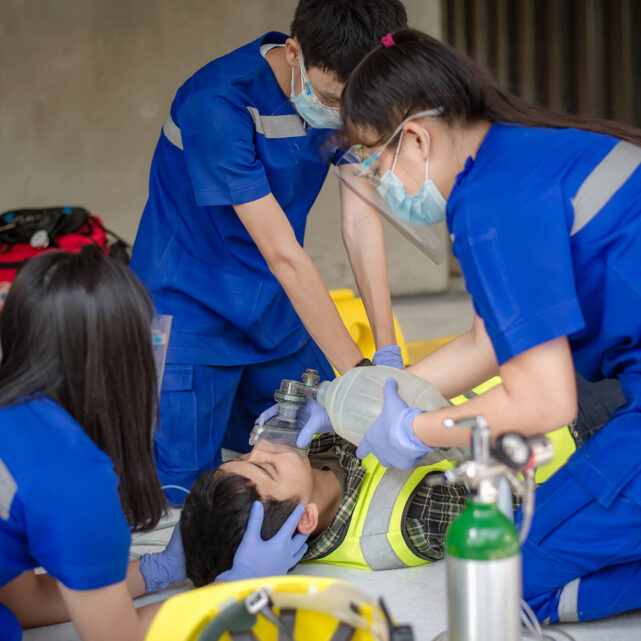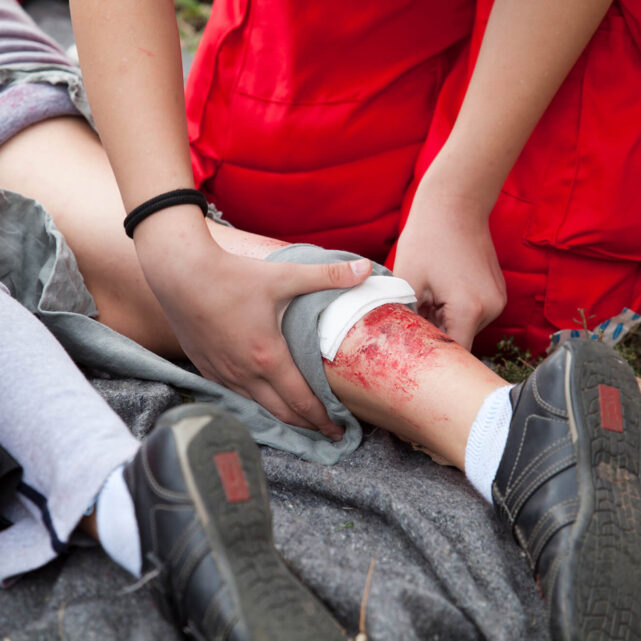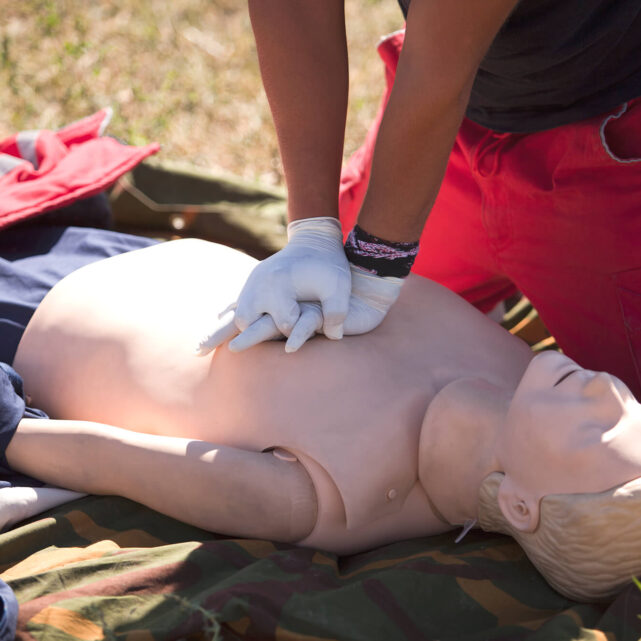Wichita CPR Training: CPR, First Aid & Emergency First Response Courses
- American Heart Association (AHA) Courses
AHA – Heartsaver CPR AED – Heartsaver CPR AED is a classroom, video-based, instructor-led course that teaches adult CPR and AED use, as well as how to relieve choking on an adult. This course teaches skills with AHA’s research-proven Practices. A great course for community groups, child care providers, and for the workplace.
AHA – Heartsaver First Aid CPR AED – Heartsaver CPR AED is a classroom, video-based, instructor-led course that teaches adult CPR and AED use, as well as how to relieve choking on an adult. This course teaches skills with AHA’s research-proven Practices. A great course for community groups, child care providers, and for the workplace.
AHA – Heartsaver Pediatric First Aid CPR AED – The Heartsaver Pediatric First Aid CPR AED course is designed to meet the regulatory requirements for child care workers in all 50 United States. It teaches child care providers and others to respond to and manage illnesses and injuries in a child or infant in the first few minutes until professional help arrives. It covers the four steps of first aid and first aid skills such as finding the problem, stopping bleeding, bandaging and using an Epinephrine pen, as well as child CPR AED, infant CPR and optional modules in adult CPR AED, child mask, infant mask and Asthma Care Training for Child Care Providers.
AHA – BLS for Healthcare Providers – The Basic Life Support (BLS) for Healthcare Providers Classroom Course is designed to provide a wide variety of healthcare professionals the ability to recognize several life-threatening emergencies, provide CPR, use an AED, and relieve choking in a safe, timely and effective manner.
AHA – Advanced Cardiovascular Life Support (ACLS) – ACLS is an advanced, instructor-led classroom course that highlights the importance of team dynamics and communication, systems of care and immediate post-cardiac-arrest care. It also covers airway management and related pharmacology. In this course, skills are taught in large, group sessions and small, group learning and testing stations where case-based scenarios are presented.
- American Health and Safety Institute (ASHI) Courses
ASHI Pediatric – ASHI Pediatric CPR, AED, and First Aid training program provides an ideal training solution for schools, child care providers, youth sports coaches, and others required to learn how to respond to medical emergencies involving children. This versatile program is based upon the 2010 CPR and First Aid Guidelines, Caring for Our Children, 3rd Ed; and other evidence-based treatment recommendations.
ASHI Combination Training – COMBO – ASHI CPR, AED, and Basic First Aid combination training was created to allow Instructors an easy option for their students seeking a comprehensive training class. The program helps develop basic first aid knowledge, skills, and the confidence to respond. CPR, AED, and Basic First Aid combination training is an excellent choice for both the community and workplace setting, and is consistent with recommendations of the 2010 National First Aid Science Advisory Board and OSHA’s best practices for first aid training programs in the workplace.
ASHI, CPR and AED – A combined CPR and AED program designed specifically for laypeople. The program is an excellent choice for both the community and workplace setting, and is based upon the 2010 International Consensus on Cardiopulmonary Resuscitation (CPR) and Emergency Cardiovascular Care (ECC) Science with Treatment Recommendations (CoSTR) and other evidence-based treatment recommendations.
Bloodborne Pathogens – American Safety & Health Institute’s Bloodborne Pathogens program includes information that will help students understand what bloodborne pathogens are and how risks of exposure can be reduced for themselves and others. The program assists in satisfying the training requirements of the U.S. Department of Labor, OSHA Bloodborne Pathogens Standard (29 CFR 1920.1030).
- Emergency First Response (EFR)
Emergency First Response is the fastest-growing international CPR, AED and First Aid training organization, with more than 31,000 instructors world-wide. Emergency First Response Participant courses include Primary Care (CPR), Secondary Care (first aid) and Care for Children courses, as well as a recommended Automated External Defibrillator (AED) component and emergency oxygen use orientation. Our training courses, through Emergency First Response, are Occupational Safety and Health Administration (OSHA) approved.
Emergency First Response Care for Children (EFR) – The Emergency First Response Care for Children course is an innovative CPR, AED and First Aid training course that teaches participants how to provide emergency care for injured or ill children (ages one to eight) and infants less than one year old. Participants learn about the types of medical emergencies that children face, and how they differ from adult conditions. The curriculum also includes the importance of attending to basic emergency situations with children, the emotional aspects of caring for children, secondary care for children, and preventing common injuries and illnesses in children.
The course includes both primary care (CPR) and secondary care (first aid) skills. The primary care portion of the course prepares the rescuer to render aid to an infant or child with a life-threatening emergency such as choking or cardiac arrest. Secondary care focuses on developing secondary patient care skills and building the rescuer’s confidence to render first aid to an infant or child in need when emergency medical services are either delayed or unavailable. The Care for Children course content is based on guidelines from the Pediatric Working Group of ILCOR.
Emergency First Response Primary and Secondary Care Course – Emergency First Response Primary Care (CPR) teaches participants how to respond to life-threatening emergencies. The course focuses on primary care through a combination of knowledge development, skill development and realistic scenario practice to make sure participants have the confidence in their ability to provide care when emergency situations arise. Primary Care (CPR) skills taught in this course:
- Scene Safety Assessment Universal Precautions – Communicable Disease Protection, including barrier use Primary Assessment Rescue Breathing Cardiopulmonary Resuscitation (CPR) Conscious and Unconscious, Obstructed Airway Management, Serious Bleeding Management, Shock Management, Spinal Injury Management
- Recommended Skills
- Automated External Defibrillator (AED) training
- Emergency Oxygen Use Orientation
Emergency First Response Secondary Care (first aid) covers injuries or illnesses that are not immediately life threatening. Participants focus on secondary assessment and first aid through knowledge development, skill development and realistic scenario practice.
Secondary Skills taught in this course:
- Injury Assessment
- Illness Assessment
- Bandaging
- Splinting for Dislocations and Fractures
Includes reference section on the following topics: Allergic Reactions, Bruises, Burns, Chemical Burns, CPR (adult, child, infant) Choking (adult and infant), Cone Shell Stings, Coral, Jellyfish and Hydroid Stings, Cuts, Dental Injuries, Diabetic Problems, Dislocations and Fractures, Electrical Injuries, Eye Injuries, First Aid Kit Assembly, Fish Spine Injury, Frostbite, Heat Exhaustion, Heatstroke, Heart Attack, Hypothermia, Illness Assessment, Injury Assessment, Insect Stings, Octopus Bites, Poisoning, Rescue Breathing (adult, child, infant) Scrapes, Seizures, Snake Bites, Spider Bites, Sprains and Strains, Stroke, Temperature Related Injuries, Venomous Bites and Stings, and Illness Assessment Record Sheet
Wichita CPR Course Prices
Our fee structure is based on the size of your group or organization.
- American Health and Safety Institute (our pick) is $75 per single attendee. There is a group rate available at $65 per attendee.
- American Heart Association (AHA) Course is $75 per single attendee. There is a group rate available at $65 per attendee.
- National Safety Council (NSC) is $75 per single attendee. There is a group rate available at $65 per attendee.
- The Emergency First Responder Class designed for divers, someone needing to meet OSHA requirements, or industrial professionals is $99 per student. There is a group rate available at $75 per attendee.
WE ALSO OFFER THE ‘SPECIAL SUNDAY’ CLASS AT REDUCED PRICES. FIND A CLASS ON OUR CALENDAR TO GET STARTED!
Course Lengths
All Wichita CPR courses are performance based, not time based. Individual course times typically vary based on:
- Number of participants
- Participant ability to meet the prescribed objectives
- Instructor-to-student ratios
- Course delivery options
The following times are typical, based on a class size of 12:
- Primary Care (CPR) – 4.5 to 6 hours
- Secondary Care (First Aid) – 2.5 to 3.5 hours
- Care for Children (Child and infant CPR/first aid) – 7 to 8 hours
- Integrated Primary Care/Secondary Care and Care for Children – 8 to 9 hours
- AED Course – 2 to 3 hours
- CPR & AED Course – 3 to 3.5 hours
Contact hours can be customized to meet specific industry requirements.
Flexible Course Methods
Wichita CPR offers courses with a flexible delivery method to meet your individual requirements. Participants master required skills and knowledge through a combination of independent study, instructor led skill development and scenario practice sessions. Instructors can also add relevant information to meet specific workplace or local training requirements.
With today’s fast-paced lifestyle, people find they not only enjoy studying on their own time, but tend to learn and remember more. Educational studies consistently show that independent study leads to better assimilation and retention of the information.
The benefits of independent study learning methods include:
- Better participant preparation – Independent study accommodates individual learning styles and allows participants to learn at their own pace. This leads to better preparation before skill development, particularly when participants watch the video and see role-model skill demonstrations.
- More effective use of time – Independent study allows the instructor to focus participant contact time on skill development and scenario practice. Participants arrive prepared for hands-on training, which makes in-class time shorter to accommodate busy schedules.
- Focused learning time – Since independent study reduces the amount of time an instructor must spend covering general background knowledge, more time can be spent on skill development to meet specific workplace safety requirements. The learning time is focused to fill in any knowledge gaps and to provide information relevant to local regulations.
- Other delivery methods – Though Wichita CPR courses and materials lend themselves well to independent study and the classroom time savings benefits this brings, there are other teaching formats your instructor may use. In some cases, live delivery of the theory components (as well as the practical sessions) is preferable. You and your instructor will determine which method is best for you.




